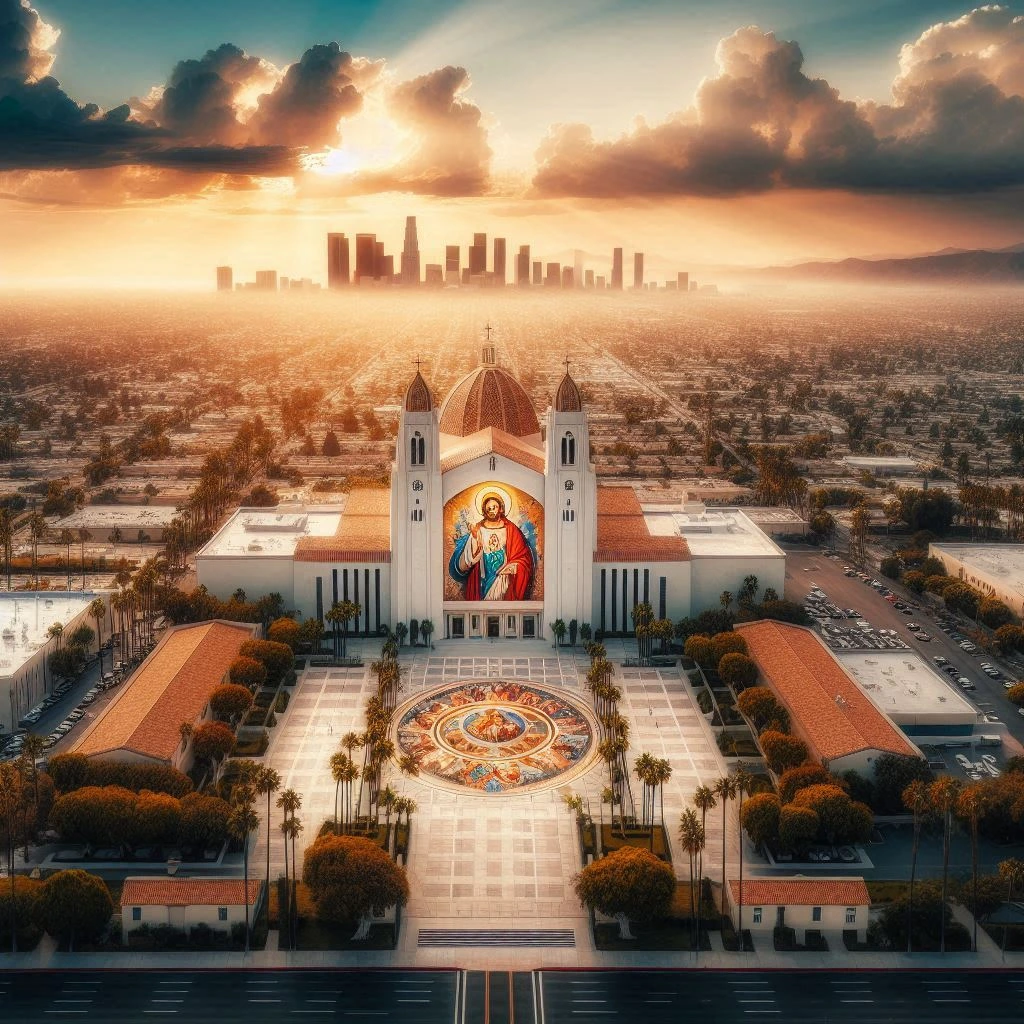Catholic Church’s Historic $880 Million Settlement in Los Angeles: A Deep Dive into the Abuse Claims and Legal Consequences

The Roman Catholic Archdiocese of Los Angeles recently agreed to a groundbreaking $880 million settlement to resolve sexual abuse claims made by 1,353 individuals. This marks the largest financial settlement by a U.S. Catholic diocese related to child sexual abuse allegations. The scandal, which spans decades, has profoundly affected the Catholic Church, survivors, and the legal landscape in the U.S. In this article, we will explore the history, the recent settlement, its implications, and the broader impact on the Catholic Church.
The Background of Sexual Abuse Allegations in the Catholic Church
For decades, sexual abuse allegations against Catholic priests have plagued the Church. Victims have come forward from all over the world, recounting disturbing stories of abuse. Many of these incidents involved priests who were in positions of authority and trust, preying on vulnerable children.
The Los Angeles Archdiocese, like many other dioceses, has faced an overwhelming number of claims. The abuse allegations first gained widespread media attention in the early 2000s when survivors started filing lawsuits. The scale of the abuse in Los Angeles was revealed through thousands of pages of documents, leading to public outrage and legal action.
The Legal Battle and California’s Law Changes
California passed a law allowing new lawsuits for child sexual abuse cases, even those that were decades old. This law opened the door for victims who were previously barred by the statute of limitations to seek justice. Other states followed California’s lead, enacting similar legislation to help victims of past abuse come forward.
For the Catholic Church, this meant a wave of new lawsuits. Many dioceses, including San Francisco, Oakland, and San Diego, sought bankruptcy protection due to the sheer number of claims. However, the Los Angeles Archdiocese chose a different route, opting to negotiate a settlement without resorting to bankruptcy.
The Historic $880 Million Settlement
The $880 million settlement is monumental, both in its size and in its significance. It represents the largest payout by any U.S. diocese to date. This settlement covers 1,353 survivors, many of whom have lived with the trauma of abuse for decades.
In announcing the settlement, Archbishop Jose H. Gomez expressed sorrow for the harm done. He emphasized that the Archdiocese would use its cash reserves, investments, loans, and contributions from other religious organizations to pay the victims. This financial settlement is intended to help survivors heal, although no amount of money can ever fully compensate for the pain and suffering they endured.
How the Settlement Was Reached
After the new law passed in California, the Los Angeles Archdiocese began mediating with abuse survivors. The mediation process involved numerous legal teams, victim advocates, and Church representatives. The primary goal was to avoid a drawn-out legal battle and provide some form of justice and compensation to the survivors.
The Plaintiffs’ Liaison Counsel, who represented the abuse survivors, issued a statement acknowledging the bravery of those who came forward. They stressed that this settlement, while significant, cannot undo the past, but it does hold the Church accountable for its actions.
The Broader Implications for the Catholic Church
This settlement has far-reaching implications for the Catholic Church in the U.S. and beyond. It highlights the systemic nature of the abuse, which was often covered up by Church leaders for decades. Many of the priests accused of abuse were relocated to other parishes rather than being held accountable, allowing the cycle of abuse to continue.
The financial impact of these settlements has been enormous. Several dioceses have been forced to sell property, cut back on services, and seek bankruptcy protection. The Church’s credibility has been severely damaged, and attendance at Mass has declined as many Catholics feel disillusioned by the scandal.
Accountability and Transparency in the Catholic Church
One of the key takeaways from this settlement is the need for greater accountability and transparency within the Catholic Church. Survivors and advocates have long called for the Church to be more open about the extent of the abuse and to take meaningful action to prevent it from happening again.
In response to these demands, many dioceses have implemented stricter policies for handling allegations of abuse. Background checks for clergy members, mandatory reporting of abuse, and independent review boards are now more common. However, critics argue that more needs to be done, including holding higher-level Church officials accountable for covering up abuse.
The Emotional Impact on Survivors
For the 1,353 individuals who are part of this settlement, the emotional toll of the abuse has been life-altering. Many survivors have suffered in silence for years, afraid to come forward due to fear, shame, or distrust of the legal system. The settlement provides a measure of justice, but the healing process is ongoing.
Support groups for survivors, such as SNAP (Survivors Network of those Abused by Priests), have been instrumental in helping individuals find their voice. These groups offer a sense of community and support for those who have experienced abuse. While the settlement brings closure for some, others continue to struggle with the emotional scars left by their abuse.
Financial and Operational Impact on the Archdiocese
The financial burden of the settlement is immense, but Archbishop Gomez has assured the public that the Archdiocese will continue its mission of “serving the poor and vulnerable.” The Archdiocese plans to pay the settlement using a combination of cash reserves, loans, and contributions from other religious organizations. This approach avoids bankruptcy, which could have further complicated the Archdiocese’s financial stability.
However, there are concerns about the long-term impact on the Church’s ability to fund its operations. The Archdiocese has had to make difficult decisions regarding staffing, charitable programs, and infrastructure to meet the settlement’s financial demands.
Lessons Learned: Moving Forward with Reforms
The Catholic Church’s handling of the abuse scandal has led to several reforms aimed at preventing future abuse. One of the most significant changes has been the implementation of the “Dallas Charter” in 2002, which established new procedures for addressing allegations of abuse within the Church. These reforms have made it easier for victims to report abuse and have led to greater oversight of clergy members.
Moving forward, the Church must continue to prioritize the safety and well-being of its members, particularly children. This includes maintaining transparency, ensuring accountability for clergy members, and providing support to survivors of abuse.
FAQs
1. Why did the Los Angeles Archdiocese settle the abuse claims without filing for bankruptcy?
The Archdiocese opted to settle without filing for bankruptcy to avoid further financial and legal complications. They used cash reserves, loans, and contributions from other organizations to pay the settlement.
2. How many people are covered by this settlement?
The settlement covers 1,353 individuals who filed claims of sexual abuse against the Archdiocese.
3. Will this settlement affect the Church’s ability to continue its mission?
Archbishop Gomez has assured the public that the settlement will not impact the Archdiocese’s mission of serving the poor and vulnerable, although financial adjustments will be necessary.
4. What role did California’s law changes play in this settlement?
California’s new law, which allows lawsuits for past cases of child sexual abuse, was instrumental in enabling victims to come forward and seek justice.
5. What steps is the Catholic Church taking to prevent future abuse?
The Church has implemented stricter policies, including background checks for clergy, mandatory reporting of abuse, and independent review boards to handle allegations of abuse.
Conclusion
The $880 million settlement by the Los Angeles Archdiocese is a landmark case in the ongoing fight for justice for survivors of sexual abuse within the Catholic Church. While the settlement provides financial compensation to the victims, the Church must continue to focus on transparency, accountability, and healing. The Catholic Church’s reputation has been deeply affected by these abuse scandals, but meaningful reforms and ongoing support for survivors can help rebuild trust and prevent future abuse.




